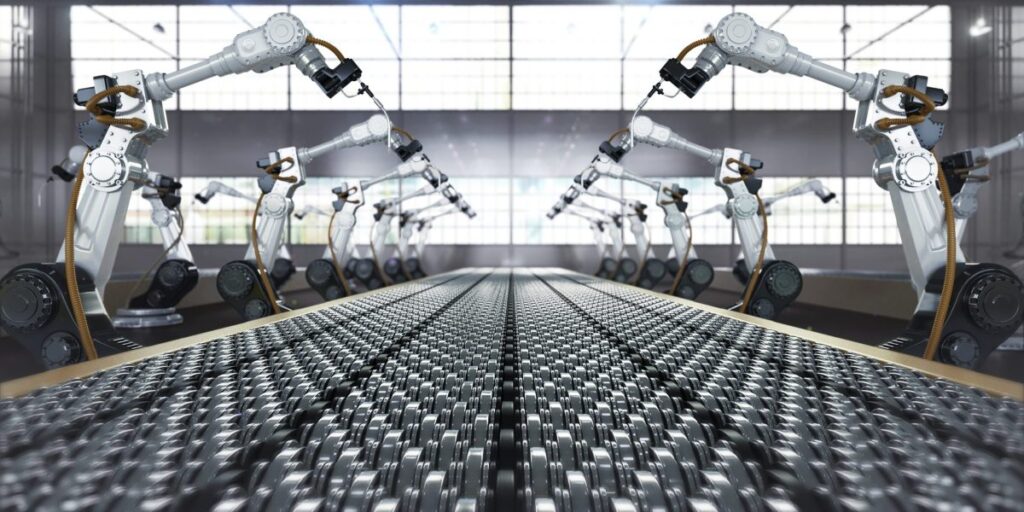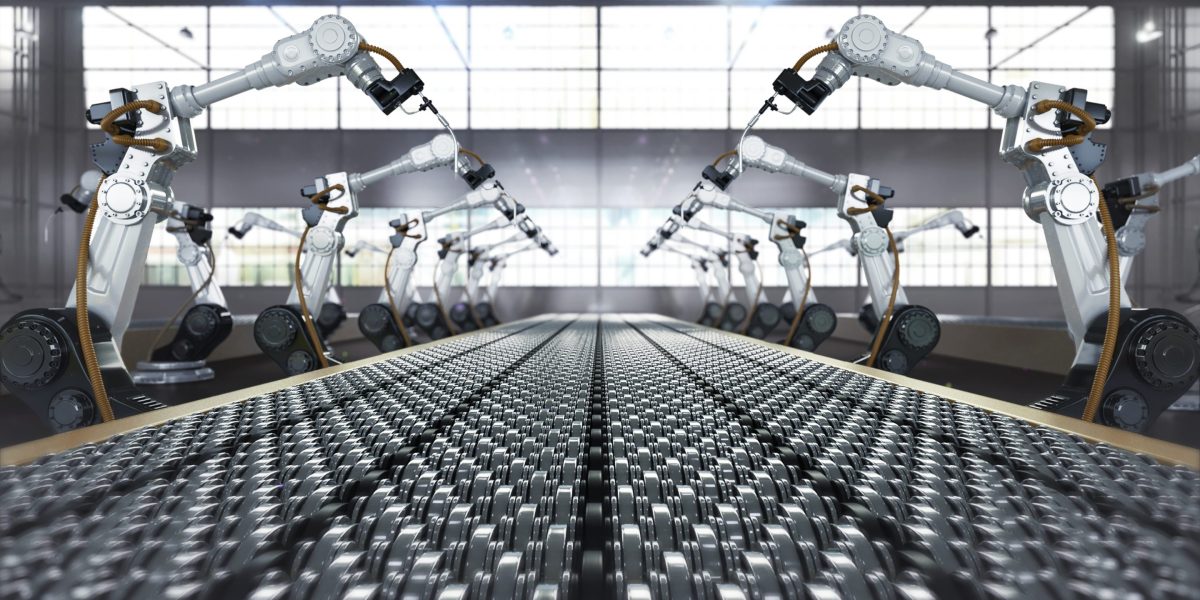A quiet revolution is transforming business investment, Wells Fargo says
“These shifting priorities to software over physical capital have weighed on purchases of equipment and dented overall manufacturing activity in recent years.”


Business spending as a share of the U.S. economy has been relatively steady since the 1940s, but it’s undergone a total transformation in recent years, according to Wells Fargo.
Going back eight decades, investment has been between 10% and 15% of GDP and grew at an average annually rate of 5% in recent years, economists Shannon Seery Grein and Tim Quinlan said in a note Wednesday, calling the top-line numbers a “façade of plainness.” But there’s more to the story.
“In short, the composition of business spending has undergone a quiet revolution,” Wells Fargo said. “The term ‘capex’ used to conjure images of heavy machinery and equipment. That is being replaced with generative AI and software.”
In the 1990s, equipment comprised more the half of capital expenditures, the bank said. But in the 20 years after that, equipment’s share of spending declined while the share going toward intellectual property climbed.
Investment in “intellectual property products” (IPP)—which includes software, R&D as well as entertainment, literary and artistic content—now makes up the biggest slice and accounts for nearly all the growth in the current cycle.
“What was once an afterthought for businesses calibrating investment dollars has become the primary source of investment,” Wells Fargo said. “These shifting priorities to software over physical capital have weighed on purchases of equipment and dented overall manufacturing activity in recent years.”
In fact, the Institute for Supply Management’s manufacturing index has been anemic for months, and a surprisingly weak reading earlier this month triggered fears the economy may be headed for a recession and a global stock bloodbath.
But looking at just the manufacturing side leaves out strength elsewhere. In the last five years, IPP spending jumped more than 30%, while equipment spending was essentially flat, according to Wells Fargo.
The trend predates the artificial intelligence frenzy sparked by OpenAI’s ChatGPT in 2022 and even the pandemic. But the current spending wave is the fastest since the tech-fueled boom in the mid-1990s, the economists said.
“Even as IPP outlays were gaining momentum ahead of the pandemic, growth has been turbocharged recently,” the bank added.
And within IPP, software spending in particular stands out. Last quarter, it was nearly 60% above pre-pandemic levels and is currently running more than three times faster than R&D, which has been eclipsed by software as the largest category in recent years.
Indeed, tech giants investing heavily in AI like Microsoft, Alphabet and Meta signaled they will continue to pour billions into the space. The trio spent a combined $40.5 billion on the infrastructure, land, and chips that power their AI services during the second quarter. And each company indicated that those numbers will only get bigger next year.
Aggressive software investment is an early sign of AI adoption and could lead to improvements in productivity, Wells Fargo said.
Outside of IPP, business are also spending in other tech-related areas, including on high-tech facilities and information processing equipment.
“There is no guarantee this tech-focused spending will elicit a productivity boom, but to the extent that it does, it would be good for growth,” the economists said. “Productivity can boost living standards and real income, which can fuel consumption and lift profits.”





